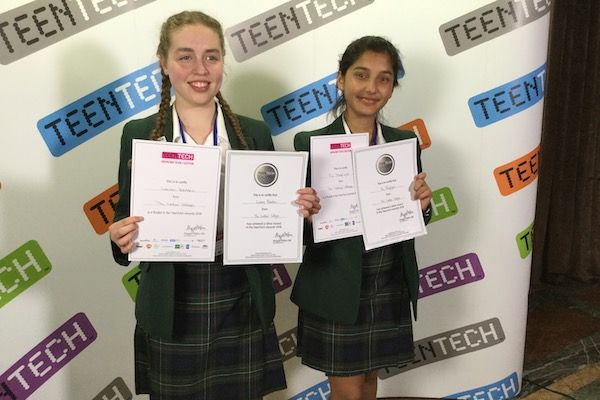

Two students from The Ladies' College have spent a year researching how to find a diabetic friendly orange juice, and having now won the final of the Teentech Challenge, they will be travelling to Buckingham Palace to collect their prize.
Lauren and Pia were aiming to find orange juices with less than 5g sugar per 100ml, but always found the amount of sugar varied below and above that level.
So the pair worked on designing a machine that would tell them if a sample drink contained more or less than the required level of fructose and glucose in their drinks, and after a number of iterations, created a working technique.
The final project Lauren and Pia came up with was deemed so successful, it made it through to the final in the Research and Literacy Category, and the Sixth Form Data Science Category, despite them only being in year 10.
They attended said final on Monday 25 June in London and won the research category, beating 150 other pupils. Now, after winning, they will meet with HRH Prince Andrew in October at the Palace to be rewarded.

Dr Karen Marshall, Head of Science at the Ladies' College, attended the event with the students.
"It is competitions like TeenTech that inspire young people to really believe in the themselves, and give them a love and excitement for all things science," she said.
"The standard that Pia and Lauren have achieved is outstanding and they have been chosen as the best in the UK. Pupils like these two girls are the future- their capacity to think out of the box and bring innovative and bring life enhancing ideas to the fore mean that we can all look forward to what the future will bring.”
The first machine they designed used a glucose test requiring heating, but the girls found it was not viable, so turned to another test involving a purple colouring disappearing.
With lots of testing of over 15 drinks, the students said they came up with a calibration curve that told the if the colour of their test liquid took longer than the two minutes to disappear, then the drink had less than 5g per 100ml.
"Machine v2 was a basic Raspberry Pi coded with node red. Machine v3 was a jazzier version of 2 with smiley faces and coded in python. Machine v4 was a miniature version using an Arduino nano coded again in node red."
The project itself was helped along the way by teachers and Sixth Formers at the Ladies' College, along with a mentor from the Alan Turing Institute in London and an Irish Consultant from Accenture.
Comments
Comments on this story express the views of the commentator only, not Bailiwick Publishing. We are unable to guarantee the accuracy of any of those comments.